Shutterstock used to be the best microstock agency. Find out what has changed and what to expect in the future.
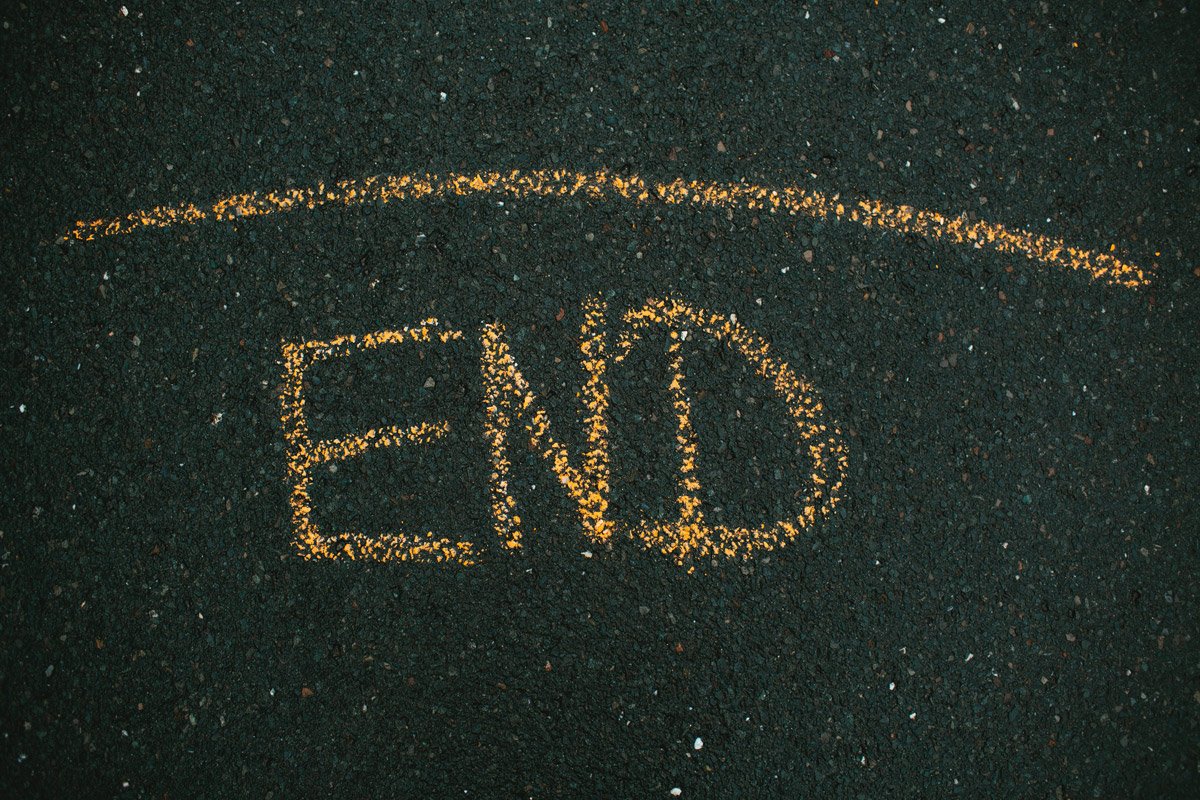
If you are reading this article, I imagine you are somehow interested in the world of microstock photography or in general, in selling photos and videos on the internet. You’ve probably also heard about the recent earthquake that hit photographers like me who upload their content to Shutterstock.
If, on the other hand, for some strange reason, you are unaware of it, I explain what happened on Shutterstock in this article.
What just happened on Shutterstock?
Long story short, Shutterstock has long been the best Microstock agency, and I have personally brought about 5000 contributors to them through my blog. I say this not to brag but to make you understand how sad/enraged I am about what’s happening.
On May 27th, 2020, I opened my email and got this message:
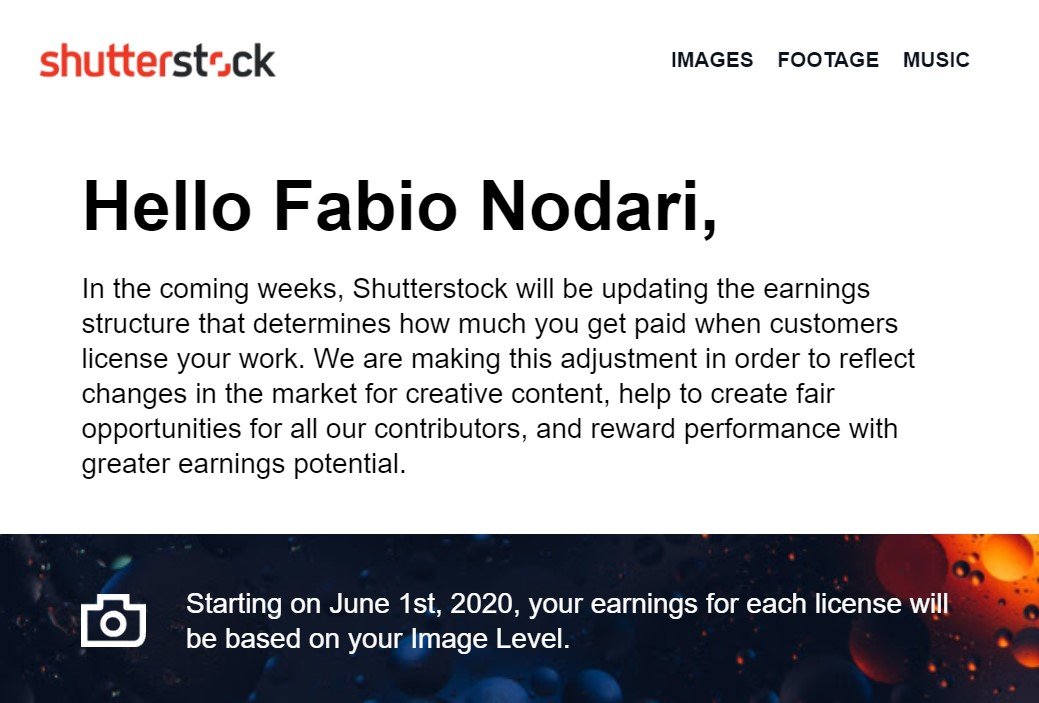
After reading the first sentence, I knew it was bad news, but I had no idea how bad it would be and how much it would affect thousands of people earning their money, mainly through Shutterstock.
In a nutshell, until June 1, 2020, earnings were related to total sales from when the account was opened. Each photographer was initially paid a minimum of $0.25 per photo sold. This figure gradually increased as sales increased to $0.38 once a photographer earned $10,000.
This, however, does not count extended licenses and other types of sales where a photo could be sold for anywhere from a few dollars to over $100 or more.
As you can see, we are talking about low prices already, but the advantage of microstock is the possibility of selling the same content thousands of times.
In an extremely unfortunate and short-sighted manoeuvre, however, Shutterstock’s new CEO Stan Pavlovsky decided to change the commission model by cutting photographers’ earnings by around 70% without reducing the prices of the photos. This decision was communicated to us by email 6 (S-I-X) days in advance!
The new commission model is as follows:
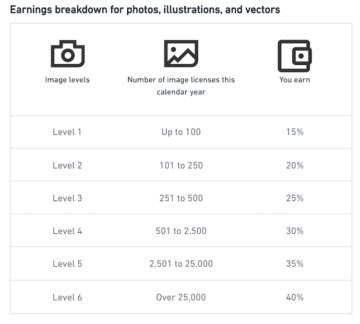
As if the reduction in commissions wasn’t enough, the new model is no longer calculated based on total sales but will reset to Level 1 for all photographers from 1 January:
On June 1, you will be placed in an Image Level and a Video Level based on your download count so far in 2020. The email you receive today will let you know which levels you are in as of this morning.
How does it work?
These new levels are based on the number of times your content is licensed rather than your lifetime earnings. All contributors reset to level 1 for both images and videos every year on January 1st. There are separate levels for images and for videos, and you graduate through them independently based on your download count in each category.
What does all of this mean for us? Almost every sale now makes a photographer earn a mere $0.1 (TEN CENTS). Even photographers who sell thousands of photos per month will start every year, on January 1st, from the lowest level, and they will then earn more. But still, we are talking about $0.17 of commissions per sale.
Why so much criticism?
The reasons for the criticism are many. These are some of them:
- The changes were communicated only 6 days in advance without giving anyone time to find alternative sources of income.
- There is a total lack of communication with photographers, some of whom have had their accounts closed just for asking questions.
- The sales price is calculated not based on the previous year’s sales but reset every 1st January.
- Net earnings are reduced by about 70%.
- Shutterstock’s hypocrisy in trying to spin the news positively says this new model “will help create better opportunities for all photographers and reward performances.”
The reaction of the photographers and Shutterstock’s response

The community reacted in a pretty intense way:
- The official Shutterstock forum has been inundated with many posts from thousands of contributors who have been so upset by the decision that the number of posts per user has been limited to 2 per day.
- Facebook groups like this were immediately created for photographers to try to make a united front and decide how to proceed. Many other people are on this forum.
- Shutterstock’s official accounts on all social media platforms have been flooded with negative comments.
- Thousands of photographers have started to deactivate their portfolios (while others have had their images deactivated directly by Shutterstock because of their negative comments).
Several sites in the industry, such as Fstoppers, Petapixels, and Insideimaging, have also talked about this news.
What has been Shutterstock’s reaction so far? None. So far, a very generic Facebook post was made, but it angered photographers even more:
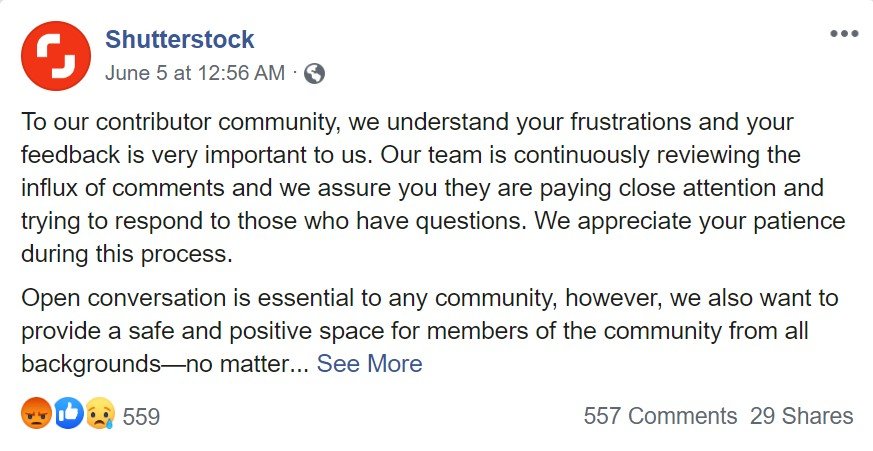
Why did Shutterstock reduce the commissions?

Shutterstock and all the other microstock agencies have based their business model on the profit made from content that does NOT belong to them: without US contributors, their business is as good as dead.
You would think that such a move, which torments those who create the company’s value, is actual business suicide, but as always, things are a bit more complex.
First, the total number of images (and other types of content) on Shutterstock while I’m writing this article exceeds 325 MILLION. Even though several millions of pictures have been deleted since June 1st, it’s still a drop in the ocean.
That said, it must be remembered that not all photos are equal. There are tens of millions of photos that don’t have any sales potential and only make Shutterstock lose money (having digital content on their servers costs money). In addition, the most active photographers are the ones who create the best content that Shutterstock sells, and they are those who are deleting their photos and leaving the platform.
So even if the number of images is still very high, that doesn’t mean anything. Also, I think the actual exodus from Shutterstock has only just begun: many photographers don’t visit forums or Facebook and will realize this change with the following payment or maybe next January.
In any case, without photographers, SHUTTERSTOCK doesn’t exist.
So why was such a bold choice made? There are several theories about it.
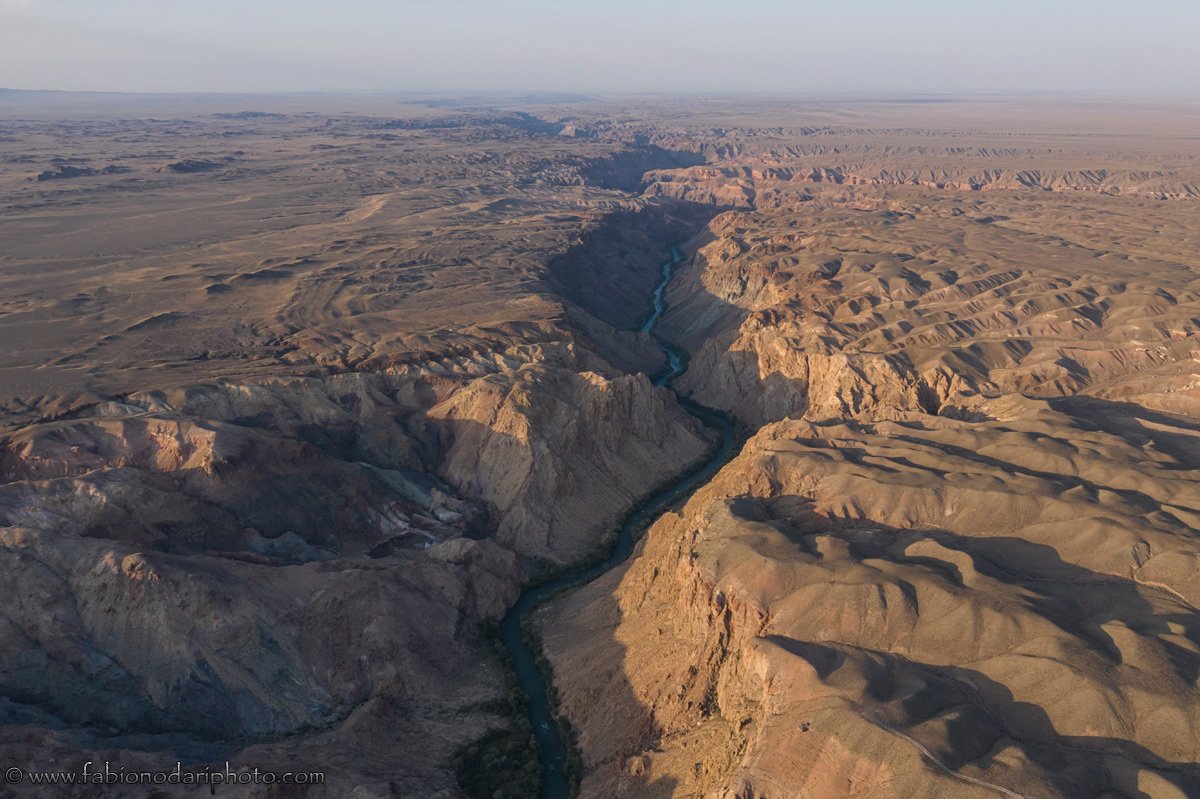
In April, Shutterstock founder Jon Oringer left his place as CEO to Stan Pavlovsky, who is responsible for what is happening now. Oringer still holds about 40% of the shares, but since then, he has started selling some of them…
Stan Pavlovsky‘s move seems ideal for consolidating short-term earnings: reducing commissions makes the photographers run away. Still, the customers are not affected immediately, and it takes a few months before they start leaving since they can’t find the content needed. Note that a percentage of Pavlovsky’s salary is linked to the value of the shares.
This could give shareholders time to see in the more immediate future that the business is generating profits and could be the ideal time to sell Shutterstock ultimately (or merge it) to another company.
What’s gonna happen from now on?

I don’t think Shutterstock has many options.
Nothing will change if the real plan is to sell the company as soon as possible. The protests will be ignored, and everything will proceed as if nothing had happened, at least for a few months, until all major customers move to other platforms. But then I guess Shutterstock would have already been sold.
If this is simply a move by a CEO who is genuinely incapable of running a company (an option that should not be ruled out), and Pavlovsky doesn’t know how the microstock world works, then I guess Shutterstock will be forced to change again. Changing how commissions are calculated at the end of the year won’t be enough. The only thing acceptable to those who have left Shutterstock is a formal apology and re-establishing the previous commission model. And that might not even be enough to convince some people to come back: many have taken it personally (and rightly so).
What can we all do?
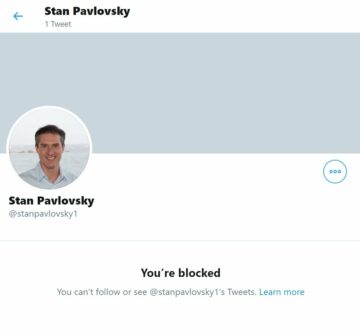
You can deactivate your portfolio from the Settings menu if you are a Shutterstock contributor.
You don’t need to delete your photos, but you can deactivate the sales, waiting until Shutterstock’s next move.
I asked for some answers directly to Stan Pavlovsky via Twitter, and this was his reply:
This behaviour makes me think he is a CEO who cannot do his job correctly. Perhaps he was even chosen as a pawn to sacrifice for the good of the company.
What are the best alternatives to Shutterstock?
I created a page where I talk about the best microstock agencies where you can sell your pictures. The reality, however, is that Shutterstock currently has no better alternatives, at least in terms of sales volumes. The agency that comes closest is Adobe Stock, but at the moment, they don’t accept editorial photos, and this limits the sales a lot.
It’s hard to predict what will happen from now on in the microstock world, but if all the photographers make a united front, I imagine that the other agencies will soon follow Shutterstock’s choice.
Recently, NFTs have become a new tool to monetize pictures and videos. I discussed it in detail in this article.
I have always discouraged uploading the pictures to a single agency, giving that agency exclusivity. Still, if this is the future that awaits us, maybe it’s time to consider this option too. You can, for example, consider Alamy, an agency where you’ll sell fewer pictures but where the average sale price is much higher than Shutterstock.



As a graphic designer, I have spent thousands of dollars with shutterstock over the years. I have been using other platform, i refuse to use them anymore. This is terrible!
Thanks. It is really saddening
Did anyone notice You can only download photos if you take out a subscription or a free trial period, what strikes me is that people can download 10 free photos and that you get paid 10 cents for each download.
It’s strange that shutterstock stipulates that your photos can be downloaded for free with a free trial period and only pays 10 cents to the contributor for this
My two sense from the other side. We are an agency and were SS customers for over 10 years. We have now cancelled our subscription and will no longer buy from SS. Several reasons, but basically they treated us poorly. So we have switched to Adobe Stock. They provide better service and honestly at this point their selection is better in my opinion, in the sense that the images are not so generic and cliched.
Thanks Daniel. That’s a very insightful comment.
I’ve recently opened a new Shutterstock account and decided to upload a series of 20 images. Guess how many got accepted? Only 2.
I was getting stupid reasons like exposure and noise, even tho images with that rejection reason were shot with ISO of 50 or 100. Makes no sense.
I’ll keep my account active, but I’ll look elsewhere to post my work. Btw, does anyone know other better alternatives to Shutterstock? Besides SS I use Picfair, but so far no sales there and they just keep advertising their plus program making me think that’s how they earn money, by selling stupid premium.
Yes. Not worth it anymore. Shutterstock is dead.
Couldn’t agree more! Another things that getting worse recently is the photo QC check. Rejections are getting ridiculous! I’m 1000% sure my photo are sharp, in focus and very little noise, but still get rejected.
Exactly. The just reject everything sontimes
Yes indeed, I just logged in to my contributor’s account saw this and deleted everything. I won’t be giving the photo nazis the time of day again, SS (how appropriate) is now like an egotistical club promoter whom forgot that without the artist there is no show or any reason for patronage. Between the absurd photo rejections and now this I’m totally done. These companies need to realize that a CPA is just that, a bean counter and definitely not the person you want advising you on how to increase profits…
Couldn’t have said it better myself Joshua.
Hi. Here my opinion, no matter who am I. This seems to me like a thypical politic discusion: unfair situation, people have the power to change things, but, unfortunately, we don’t use it, even more, we are not able to use it properly, because of we are not able to think collectively in the same way than individualy. It is a problem of ethic, phylosophy, and awareness. But seems to be that we are just looking through money. I think that issue, like recent Shutterstock announcement, speaks much more about us, rather than the company dirty politics and hypocresy. I think that speaks much more about our personal values, what we are willing to do in the name of money (penys often) even againts ourselfs and our interests, in a market with unclear rules. Sad. And they know that (SS).s.
Yes I totally agree with you. Unfortunately in a worldwide market is very difficult to simply say: let’s united and stop uploading to SS. There are third-world countries where even 0.10$ at the end of the day make a difference..
SS is a con!…I have had the best possible tech guys looking at their algorithm and frankly I dont want to give/leave details but its absolutely crazy, just favouring a few parts of the world! the rest are all with capped earnings!
Couldn’t agree more….feel awful about this.
Hope they’ll change their minds, although I highly doubt it